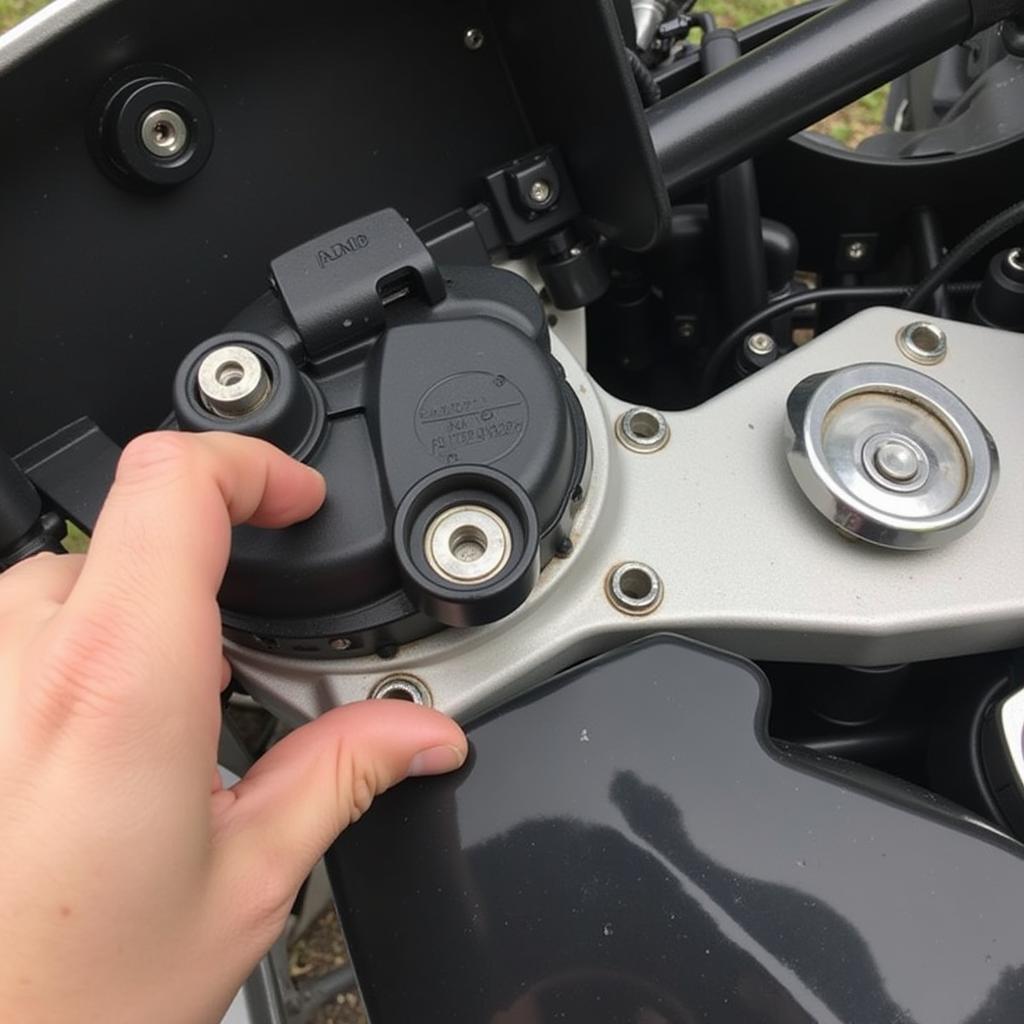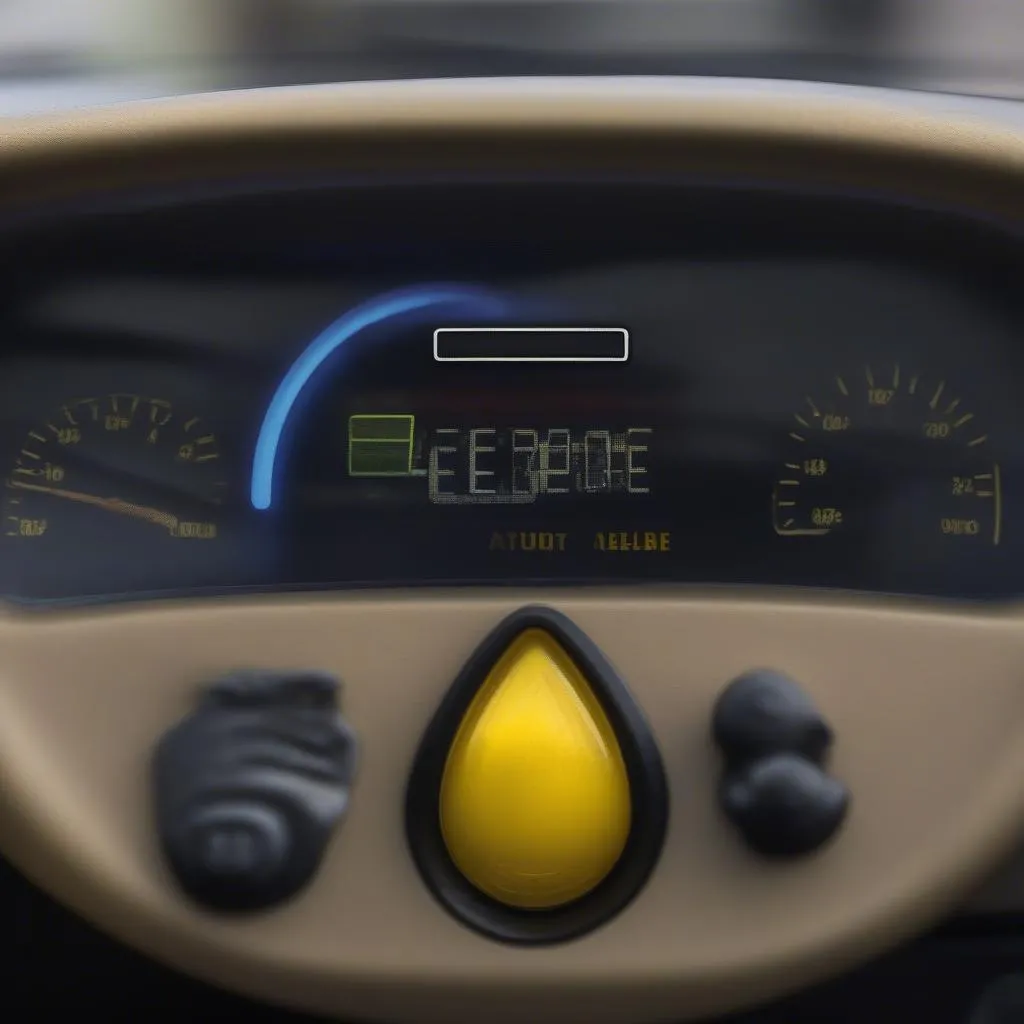The brake warning light on your dashboard is a crucial safety feature designed to alert you to potential problems within your braking system. While it can be a simple fix, ignoring a glowing brake warning light with could lead to dangerous driving conditions and costly repairs. This comprehensive guide will delve into the common causes of a brake warning light with, empowering you with the knowledge to diagnose and potentially resolve the issue.
Understanding Your Car’s Braking System
Before we dive into the specifics of why your brake warning light might be on, it’s beneficial to have a basic understanding of your car’s braking system. Modern vehicles utilize a hydraulic system that transmits force from the brake pedal to the wheels, effectively slowing down or stopping the vehicle. Key components include:
- Brake Pedal: The lever you press to engage the brakes.
- Brake Booster: Amplifies the force applied to the brake pedal, making braking easier.
- Master Cylinder: Converts the mechanical force from the brake pedal into hydraulic pressure.
- Brake Lines: Metal tubes carrying brake fluid from the master cylinder to the wheels.
- Brake Calipers: House the brake pads and contain pistons that press the pads against the rotors.
- Brake Rotors (Discs): Metal discs attached to the wheels, against which the brake pads clamp to create friction.
- Brake Fluid: Incompressible fluid transferring hydraulic pressure throughout the system.
Common Causes of a Brake Warning Light With Solutions
Now, let’s explore the most frequent reasons why your brake warning light might be illuminated:
1. Low Brake Fluid Level
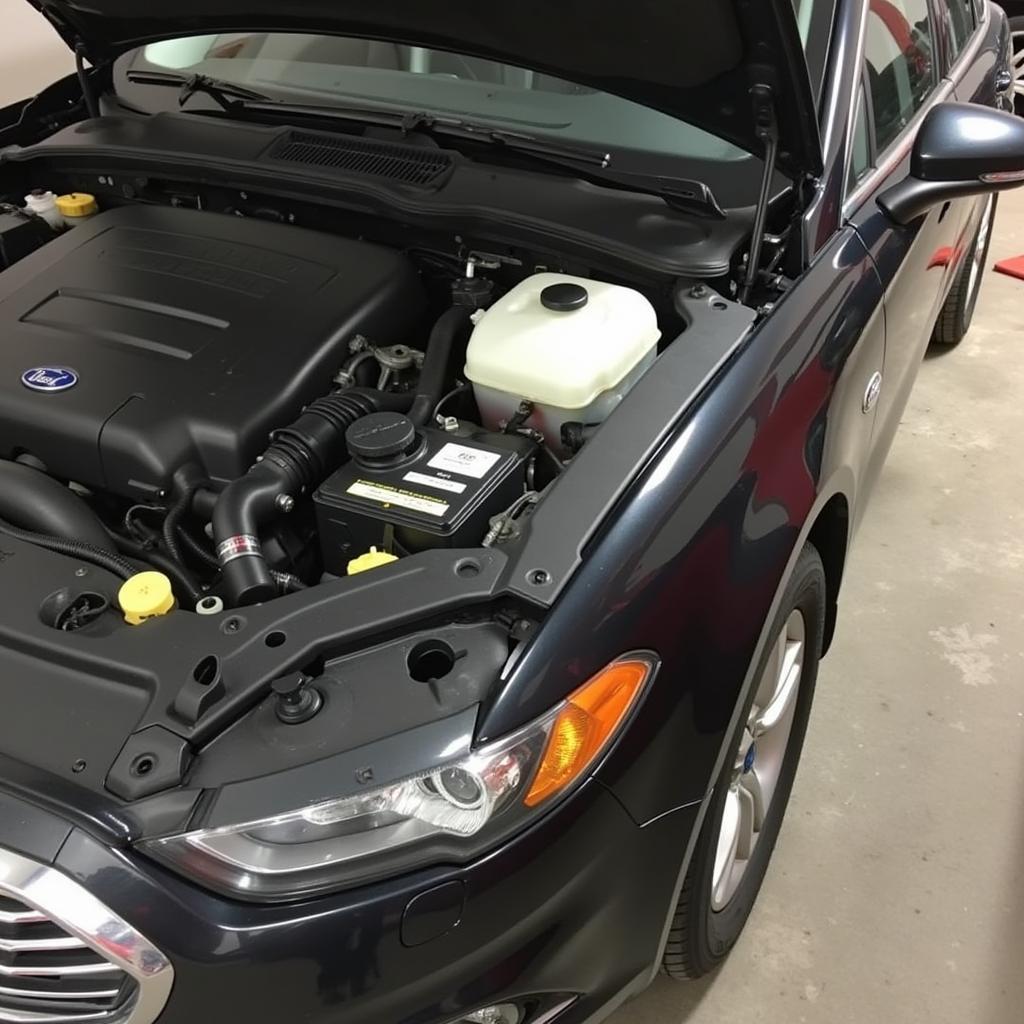 Car with low brake fluid level
Car with low brake fluid level
One of the most common culprits behind a brake warning light with is a low brake fluid level. As brake pads wear down, the brake fluid level naturally drops. However, a leak in the braking system can also cause a rapid decline in fluid.
Solution: Check the brake fluid reservoir level. If it’s low, top it off with the recommended brake fluid type for your vehicle. However, if you notice a consistent need to add brake fluid, it indicates a leak that requires immediate professional attention.
2. Worn Brake Pads
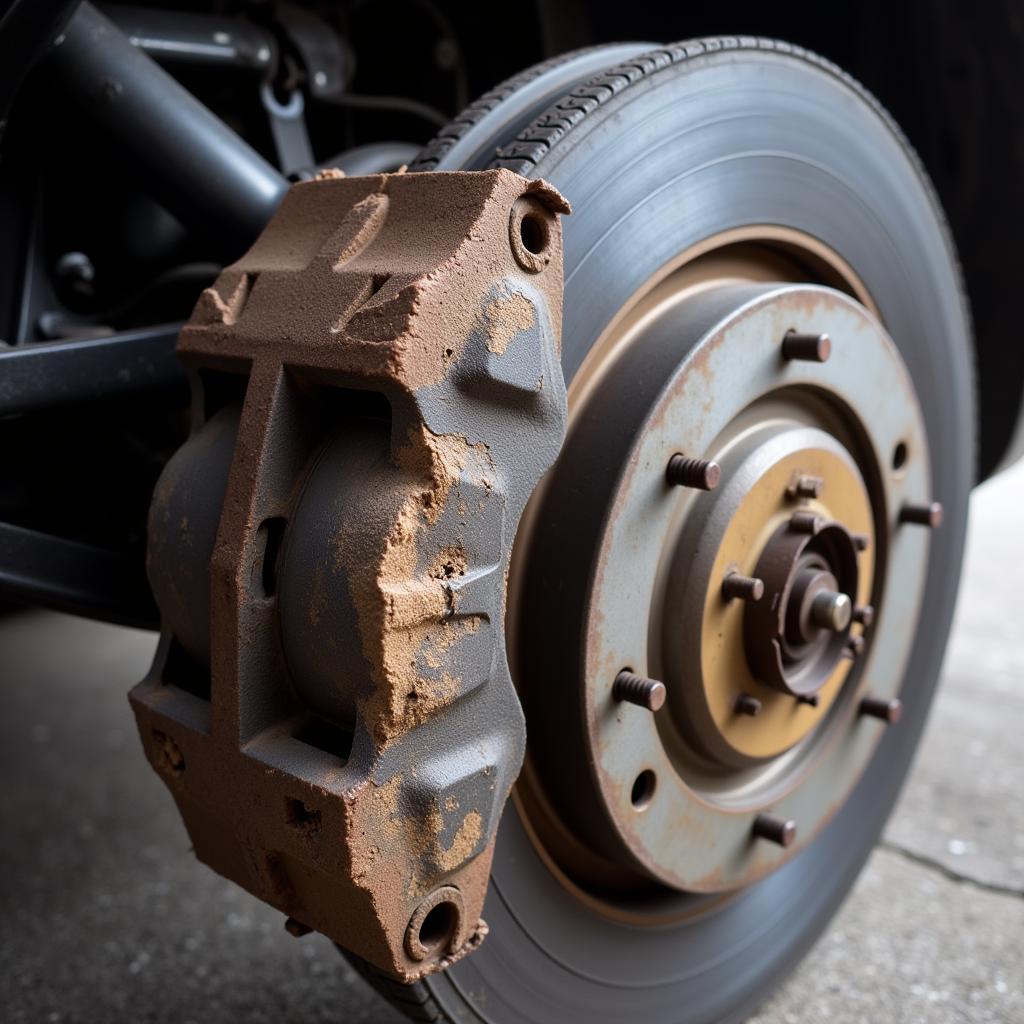 Worn brake pads on a car
Worn brake pads on a car
Brake pads are designed to wear down over time. Most vehicles have a wear indicator, a small metal tab that makes a squealing sound when the pads are nearing the end of their lifespan. If ignored, the brake warning light with will illuminate, signaling critically worn pads.
Solution: Worn brake pads need replacement to ensure optimal braking performance and safety. It is recommended to replace both pads on the same axle simultaneously, even if only one appears worn.
3. Faulty Brake Sensor
Modern cars often have sensors within the braking system to monitor various components, including brake pad wear and brake fluid level. A malfunctioning sensor can trigger the brake warning light with even if there’s no actual problem.
Solution: Diagnosing a faulty brake sensor typically requires specialized diagnostic equipment. If you suspect a sensor issue, consult a qualified mechanic to diagnose and replace the faulty sensor.
4. ABS Issue
The Anti-lock Braking System (ABS) plays a critical role in preventing wheel lockup during hard braking, enhancing vehicle stability and control. When the ABS system encounters a problem, a separate warning light usually illuminates on the dashboard. However, in some cases, it might trigger the general brake warning light with.
Solution: Similar to sensor issues, diagnosing ABS problems often necessitates specialized tools. A qualified mechanic can retrieve trouble codes from the vehicle’s computer system to pinpoint the root cause of the ABS issue and recommend the appropriate repairs.
5. Parking Brake Engaged
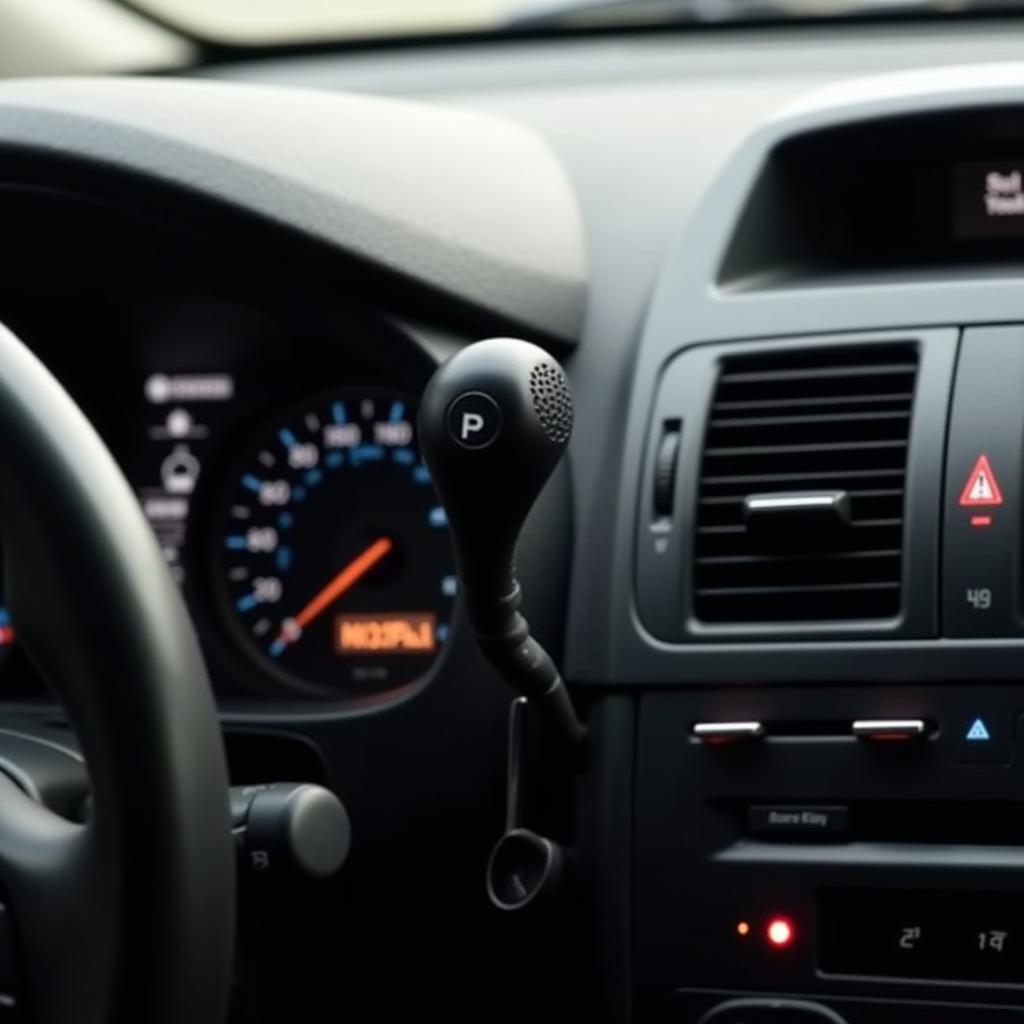 Car with parking brake engaged
Car with parking brake engaged
It might seem obvious, but sometimes the simplest solution is the right one. If you’ve recently driven your car and parked it, there’s a chance you might have forgotten to disengage the parking brake fully.
Solution: Check your parking brake lever or switch to ensure it’s fully released. If it was engaged, disengage it, and the brake warning light should turn off.
When to Seek Professional Help
While some brake warning light with issues can be resolved with simple DIY fixes, others require the expertise of qualified mechanics. If you encounter any of the following, seek professional assistance promptly:
- Persistent Brake Warning Light: If the light remains on even after checking and addressing the common causes mentioned above.
- Soft or Spongy Brake Pedal: A soft or spongy brake pedal feel indicates a potential issue with the hydraulic system, such as air in the lines.
- Grinding Noise When Braking: A grinding sound while braking typically signals metal-to-metal contact, indicating severely worn brake pads or a more serious issue.
- Pulling to One Side While Braking: This could be a sign of uneven brake pad wear, a stuck brake caliper, or a problem with the hydraulic system.
“Ignoring a brake warning light with is like ignoring a flashing red light at a busy intersection,” says John Smith, Senior Automotive Engineer at XYZ Automotive. “It’s simply not worth the risk. Your safety and the safety of others on the road should always come first.”
Conclusion
Addressing a brake warning light with promptly is crucial for maintaining your safety and the well-being of your vehicle. By understanding the common causes outlined in this guide, you can take the first steps toward diagnosing and potentially resolving the issue. Remember, if you’re uncertain about any aspect of brake repair or if the problem persists, don’t hesitate to seek the expert help of a qualified mechanic.

